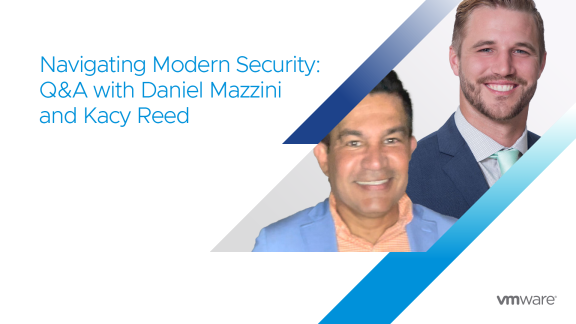by Jim Streit, VMware NSX Senior Technical Account Specialist (TAS)
Does this sound familiar?
Your boss just asked you to check out a new VMware software product, like NSX. Or maybe you need to get ready for an upgrade, or maybe you want to test some configuration changes … but you just don’t have a good place to do what you need. You wish that you had a little area that won’t impact your production environment and doesn’t require a bunch of expensive hardware or space. A great option for you might be a nested lab or sandbox.
What is a nested lab?
A nested lab is mini datacenter that runs as handful of virtual machines, a vCenter and a couple of ESXi servers running as virtual machines. These VM’s might run on some older server hardware, a large desktop or laptop, or unused space in your current virtualized environment or DR site. If you are fortunate enough to have a laptop with enough resources you can take your lab on the road with you. While you can’t do everything with nested hosts, you can do most everything and they certainly provide an enormous value in any lab environment. More about what a nest lab is …
Why is a nested lab a good idea?
I feel there is a true value a nested lab can bring to you and your company. That value can come in many different ways, but most importantly a lab provides you a safe environment that allows for changes that shouldn’t impact a production environment. There is nothing worse than bringing down a production environment because a function or process wasn’t understood or needed.
Some examples of how a nested lab can be used:
- Learning how to install a new product like, vSphere, ESXi or NSX. Just taking off and going as far as you can before having to read the manual, seeing some of the setup screens or figuring out what information you might need.
- Testing product upgrades or patches. It’s less stressful to test an upgrade when you can easily go back to a snapshot if things go absolutely sideways.
- Evaluating a feature or configuration change. Not sure exactly how that new feature or change works but you would like to understand it. Try it in the lab first, if it works as expected you can bring it to your production environment.
- A training environment. If you have some new people on a team and they need how to use a product. Spin up a few nested labs so each person can have their own environment without impacting others.
- Just for learning or certification experience. A nested lab provides a great playground to get hands-on experience, touch, see, smell and taste all of the features while you are studying for a certification
- Break stuff.When you break things, you learn how to fix it. When you know how to fix it you take your understanding to a higher level. Or, maybe you simulate a problem in your production environment and try different tactics to resolve the issue.
No matter how you use a nested lab, one of the great values is being able to easily blow it away and start over.
What is needed to set up a nested lab
This is a tricky question, like asking how long a piece of string is. It really depends on how much you want to include in your lab. We’ll start with the basics and you can ballpark additional resources based on their minimum installation requirements.
For example, a very basic lab is a vCenter server and two ESXi hosts. This would allow you to explore most of the features found in vSphere and would require about 6 vCPU, 22 GB of RAM and about 300 GB of disk storage. To run NSX in your nested lab, increase those values up to 8 vCPU, 30 GB of RAM and 360 GB of disk space.
By following their minimum requirements, each additional product you wanted to include in your lab would increase your CPU, memory and storage needs. One thing to keep in mind these VM’s likely won’t take all of the memory and disk space can be thin provisioned to save on storage resources.
Getting started
Here is a guide for as starting point for someone to build an NSX-T nested lab. Please keep in mind that a nested lab is not supported by VMware due to the untestable nature, but the good news is there is great community support. Here is our tech document that covers detailed instructions. Once you have your hardware or available space identified, download vCenter Server, ESXi and NSX. A VMware user account is required when downloading software from VMware. If you don’t have an account you can sign up for one here.
- Deploy vCenter Server just like you normally would.
- When it comes to installing ESXi, you will need to create a virtual machine with at least 2 vCPU, 4 GB of RAM and 4 GB of storage.
- Login to vCenter, setup your Datacenter, cluster, and add the ESXi hosts to the cluster
- Install NSX manager and connect to vCenter.
From a licensing perspective, VMware has a free 60-day evaluation license. Another great option is purchasing VMUG Advantage which provides license keys to many VMware products for a year, plus a lot of other great discounts.
In closing, you can see that with only minimal investments and resources you can get a nested lab stood up in your environment. Performance of a nested lab probably won’t match that of running on physical hardware but that is not the objective here, being able to get you access to be able to test most of the features is. As you gain experience you can grow or shrink the nested lab as your requirements evolve. There are many advantages in having a safe place to test and learn features, and the overall return on value for a company is phenomenal.
Read this Nested Lab Tech Doc for the step-by-step instructions for building your own nested NSX-T lab. And, talk to your VMware account representative to learn more about other ways an NSX Technical Account Specialist like me can help you drive outcomes from your VMware NSX deployment.
Happy computing!

Jim is an experienced NSX, vSAN and virtualization specialist, having spent over 25 years working with several companies in technology roles from operations to leadership. As an NSX Technical Account Specialist (TAS) at VMware Jim has collaborated on deploying multiple software-defined data centers at various sized companies across several industries. Prior to joining VMware, he was a Virtualization Architect for a global news, media and information organization.





